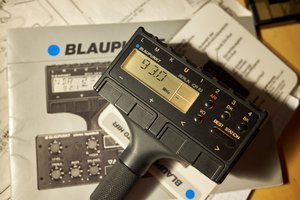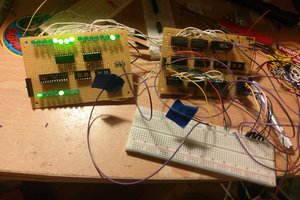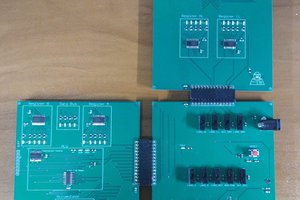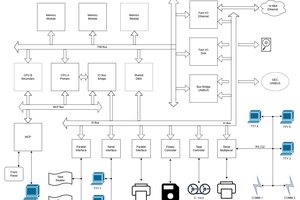1. Dictionary
- XiPU - XiRX Processor Unit. The name of the 8-bit TTL CPU.
- XiPU_v2 - The second iteration of the XiPU.
- XiPC - XiRX Personal Computer. The name of the simple computer based on XiPU CPU
- TTL - Transistor-transistor logic.
- HCT - High-Speed CMOS chips available in TTL compatible form.
- RAM - Volatile random access memory.
- ROM - Non-volatile read-only memory.
- Register - Quickly accessible location for a small amount of data stored in a TTL chip.
- uROM - uROM determines which of the internal registers is used to read from and write to at the current micro step of executing instruction.
- BIOS - Basic input/output system. Provides access to basic IO API and loads the OS.
- OS - Operating System. It contains a terminal interface and basic libraries.
- Stack - High accessibly memory page where data is stored as FILO.
- Function Frame - Part of the stack where arguments of the function and local variables are stored.
- IO operation - Read or write data to pins connected to external world.
- External BUS - Data highway for IO operations.
- ALU - Arithmetic logic unit.
2. XiPU_v2
- 8-bit processor based on 7400 HCT chips compatible with TTL.
- 64 kB of RAM space. Lower 2 kB are reserved for BIOS stored at EEPROM. The 4 kB at the end of the memory are used as a stack. Rest 58 kB of memory could be used by OS or applications.
- 1 MHz clock speed. The processor uses a 2 MHz crystal to get two 1 MHz square waves shifted relative to the other about half.
- The processor uses uROM stored in two EEPROMs.
- Each instruction could be built from 2 to 16 micro steps. Each micro step takes exactly 1 clock tick.
- Four registers:
- A, B - 8-bit general purpose registers.
- X, Y - 8-bit auxiliary registers. Could be used mostly as general purpose registers. Together, it can be used as a 16-bit address register.
- Two hidden stack registers:
- SP - Stack Pointer. It is used to address the head of the stack.
- BP - Base Pointer. It is used to address the function frame on the stack to store parameters of a function and local variables.
- Three internal buses:
- BUS A - 8-bit main BUS for registers, RAM, ROM, IO operations.
- BUS B - 8-bit auxiliary BUS for registers used as second input for ALU.
- BUS C - 16-bit memory address BUS for addressing RAM.
- 8-bit IN and 8-bit OUT external data BUS. It is used as a simple communication way with the external word.
3. XiPC
- Personal computer based on the XiPU.
- 40x30 characters with 16 colors support. It uses 640x480 LCD with an 8-bit color palette to render image output.
- Mono speaker with a volume knob.
- RS-232 with 1200 bps support.
- RTC with battery support.
- Built-in QWERTY keyboard.
- 4 status LEDs.
- 7.5V max 1.0A power supply.
 Pawel Jablonski
Pawel Jablonski
 Anders Dinsen
Anders Dinsen
 Boxerbomb
Boxerbomb
 Dave's Dev Lab
Dave's Dev Lab
 Mikolaj
Mikolaj